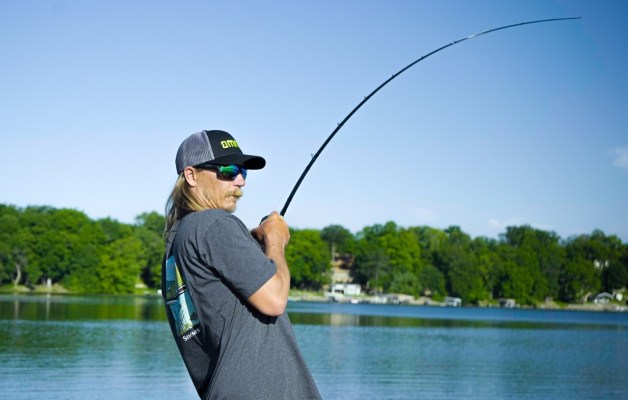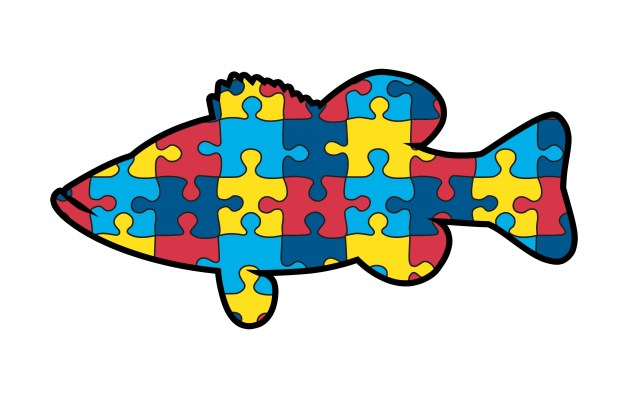Today’s word is “stability” … as in tournament leaderboard stability. It’s a concept that doesn’t get much (or any) love, but it deserves some understanding. Affection is for warmer and fuzzier concepts, like runs batted in, yards after catch and the venerated “10” scale[i]. Leaderboard stability isn’t like that, but it’s something every professional bass fishing fan should know.
By leaderboard stability, I mean the tendency of a tournament leaderboard to stay about the same through the course of an event. Yes, there are fluctuations. Yes, there are moves into and out of the top 12 over the course of a Bassmaster Elite Series event, but mostly things are … you know … stable.
Let’s start by looking at the 73 Elite winners since the Series began in 2006. How many of them do you think started the tournament in the lead?
Twenty of them, in fact. More than one-fourth of the eventual winners were in the lead after the first day. Thirty-five percent were in the top two. Nearly half were in the top four and almost 60 percent were in the top six. Expand the search to the top dozen and you find that 74 percent of the eventual winners are there at the end of Day 1.
If you want to win an Elite event, you’d better start strong.
Naturally, Day 2 is even more stable. The eventual winner has the lead at the end of Day 2 no less than 45 percent of the time — nearly half! That means that if you were betting who would win an Elite event and you took the Day 2 leader and gave your buddy the rest of the field (100 or so anglers), you’d win about half the time.
If that’s not stability, nothing is.
And it gets more stable from there, of course. At the end of Day 2, the eventual winner is in the top five 85 percent of the time and in the top 10 almost 95 percent of the time. In all the Elite tournaments ever fished, after two days the eventual winner was worse than 10th only five times and worse than 19th only once.
On the third day of an Elite tournament, the eventual winner already has the lead 59 percent of the time. He’s in the top two 84 percent of the time and in the top four 94 percent of the time. Look any further down the list for your eventual winner and you’re probably just doing some wishful thinking.
So why does it seem that the leaderboard gets a thorough shaking each and every day?
Well, for one thing, that’s all anyone seems to talk about. For another, we’re only discussing the winner here. When you’re looking at the full field, there are bound to be some rises and falls somewhere in the daily standings — it’s just that they don’t happen at the very top very often.
But the biggest reason for all the hype about leaderboard instability is that it’s so rare it’s memorable. We remember the big surges and the occasional crashes because they’re remarkable, interesting, even fun.
Some of the biggest come to mind very quickly.
Steve Kennedy started the 2007 Elite event on Clear Lake in 51st place, almost 13 pounds off the pace (and, more importantly, with just 61 percent of the leader’s weight) before picking up a swimbait and setting a new total weight record in the five-bass-limit era.
Jason Williamson was 38th at Lake Amistad after Day 2 in 2009 but went on to win, posting huge catches on the third and fourth days. He ended up winning by more than eight pounds!
Earlier this year, Elite rookie Jason Christie was in 11th place going into the final round — 5-6 behind the leader — and came on to win. It wasn’t nearly the biggest deficit made up on Day 4, but he did move up the most places in that round.
The falls are just as compelling as the jumps, though perhaps morbidly so.
On the Mississippi River in 2012, Elite rookie Kyle Fox took the Day 1 lead with 16-8 only to have the wheels come off in the next round. He managed just three bass weighing 6-1 and finished 83rd. Earlier this year, Brandon Palaniuk had the Day 1 lead on the same waterway, but a culling violation on Day 2 resulted in his catch being disqualified. He finished 77th.
Every Day 2 leader but two managed to hang on and finish in the top 12. The first to come up short was Rick Morris in 2008 on Lake Murray. He ended up 18th. The most recent was also the most precipitous fall. In 2013, Greg Vinson led each of the first two days on Bull Shoals but slipped to 23rd on Day 3 and outside the final cut.
The biggest fall for a Day 3 leader also happened this year. Tommy Biffle was out in front at West Point Lake (with just a 9 ounce lead), but a tough final round saw him end the tournament in 10th place.
Leaderboard stability is the norm, and it’s usually pretty easy to predict which events will have it. If the fishing’s easy (lots of limits, a bassing average of 4.5 or better) or the bass are small (averaging around two pounds), the leaderboard will hold its shape for four days. It’s just tough to move up or down very much when everybody’s catching fish and they’re all about the same size.
Leaderboard volatility requires the opposite qualities. When the fishing’s tough (bassing average of 4.0 or less) and/or the average bass is larger than usual (3 pounds and up), the leaderboard is a moving target with lots of activity.
Generally, it’s those tournaments with lots of leaderboard movement that are the most interesting and most memorable. But it’s their rarity that makes them special.
[i] In law school, some friends and I decided to improve upon the 10 scale. We considered several variations (some too colorful to recount here) before settling on the “Helen Scale,” which I maintain to this day is the best out there. We calculated that if Helen of Troy had “a face that launched a thousand ships,” then a millihelen was the quantity of beauty required to launch a single ship. What the system lacks in accessibility, it makes up in precision.





